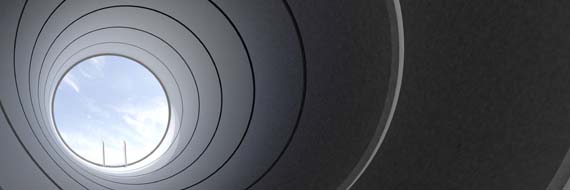Advanced Inspection Techniques
Through Advanced Non Destructive Testing (Advanced NDT) techniques Noble Offshore contributes to safety, reliability and environmental performance of onshore and offshore installations, pipelines and terminals.
Using state of the art inspection technology, Noble Offshore targets crack growth and aggressive corrosion, both frequent causes of component and plant failure. We use long-range ultrasonic pipeline evaluations, acoustic emission testing, magnetic flux scanning and other special ultrasonic thickness measurement methodologies.
Long Range Ultrasonic Testing (LRUT) System (Guided Waves)
While increasing used in deep water wells, Long Range Ultrasonic Testing (LRUT) is traditionally used to detect corrosion, erosion and other defects in pipe-work. It allows for tens of meters of pipeline to be simultaneously assessed for internal and external corrosion, in either direction, from a single location achieving complete coverage of the pipe wall. It works without the need to remove insulation or coating.
Magnetic Flux Leakage (MFL) Pipescan
Provides a cost effective, accurate scanning approach to determining piping integrity, particularly for exposed bare, painted or thinly coated carbon steel components.
Eddy Current Inspection
Eddy current inspections are a fast, sensitive, reliable method for weld inspection and detecting surface cracking beneath coatings. Portable, battery operated equipment means most test locations can be easily accessed, including sub-sea applications. Survey reports can be generated on site at the end of the working day.
Eddy current inspection techniques can be used:
- Without disturbing the insulation or coating
- When insulation is aluminium, stainless steel or low alloy steel clad
- While plant is in operation
- When equipment is hot < 500°C or cold > – 100°C
- When insulation is wet
- When object surface is rough or encrusted
- When insulation is rough or heterogeneous
- When insulation is wire mesh reinforced.
IRATA Rope Access
IRATA (Industrial Rope Access Trade Association) rope access methods are similar to fall arrest techniques, in which a full body harness and twin ropes are used to gain access to elevated worksites. It is a quick, cost effective and, most importantly, safe method of carrying out work at height. Noble Offshore provides qualified IRATA Rope Access Inspectors.
Ultrasonic Time of Flight Diffraction (ToFD)
An ultrasonic, non-destructive technique used to examine welds in pressure vessels and pipework ToFD can be employed to carry out corrosion mapping on pressure vessels and pipework. It can also be used on heavy wall pressure vessels, < 150mm in thickness, to detect critical flaws such as embedded cracking and lack of fusion. Noble Offshore provides ultrasound technicians with advanced training.
Rapid Ultrasonic B-Scan inspection
Used for ‘real time’ detection of internal corrosion, laminations, plate inclusions, blisters and general wall thickness loss of ferrous and non-ferrous materials.
Online & Offline Inspections
LA provides engineering and management support to the petrochemical industry for the safe and cost effective operation of storage tanks. Online inspections typically consist of ultrasonic shell crawler runs, and ultrasonic roof measurements while offline inspections typically consist of MFL (Magnetic Flux Leakage) of the tank bottom plates.
Acoustic Emission Testing
Acoustic emissions testing (AET) is a non-intrusive inspection evaluation method for assessing/monitoring pressure systems such as spheres and tank floors for corrosion and structural defects. AET is an experience-based evaluation method utilising acoustic sensors.
Tank Bottom Testing
Tank bottom evaluation is an experience-based analysis that permits non-intrusive, efficient and cost effective evaluation of the condition of tank bottoms.
Pressure Vessel Testing
The pressure vessel testing system offers on “expert system” for evaluation of the condition of pressure systems and spheres, based on Noble Offshore’s experience from over 2,00 successfully completed tests.
